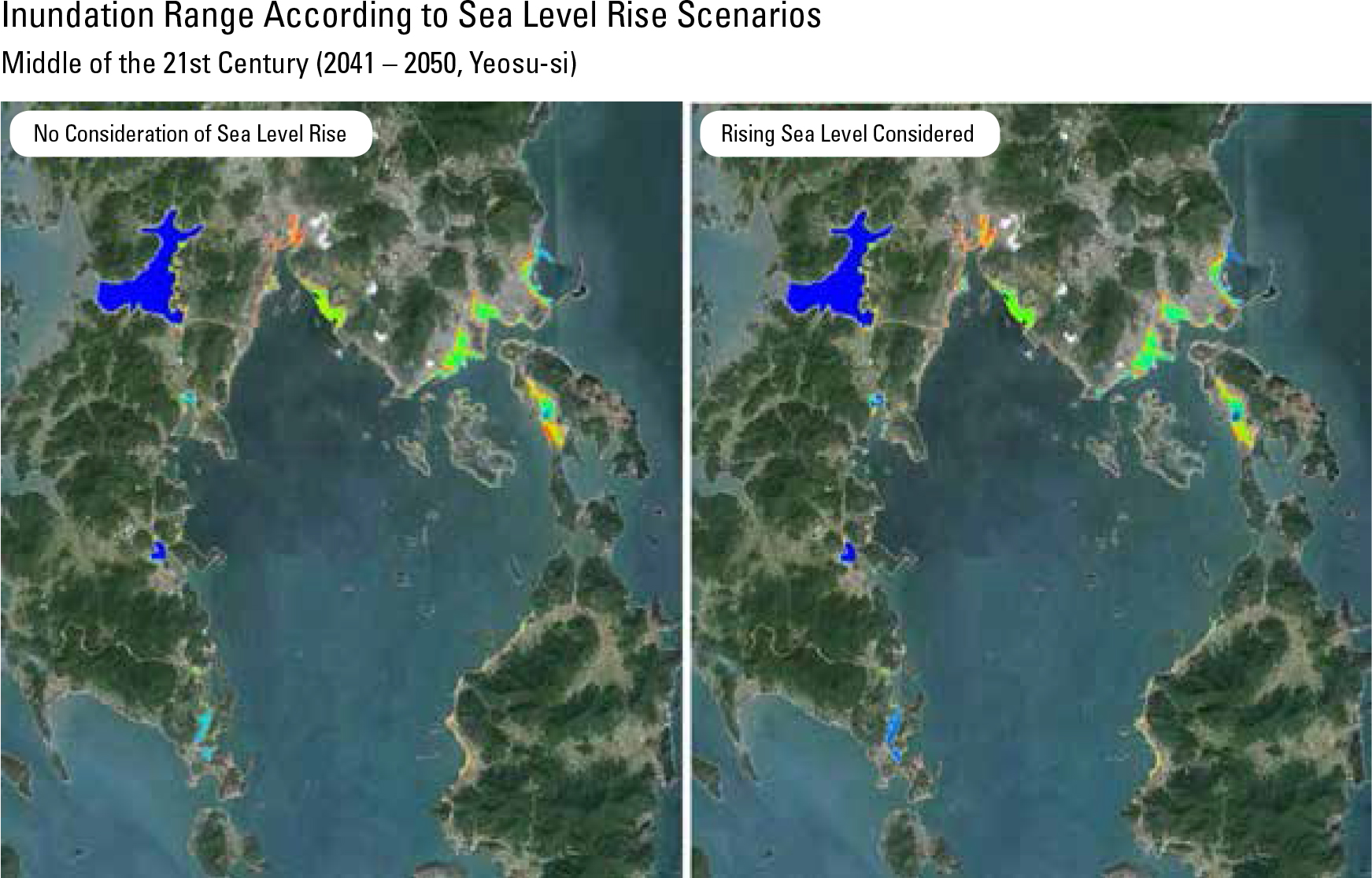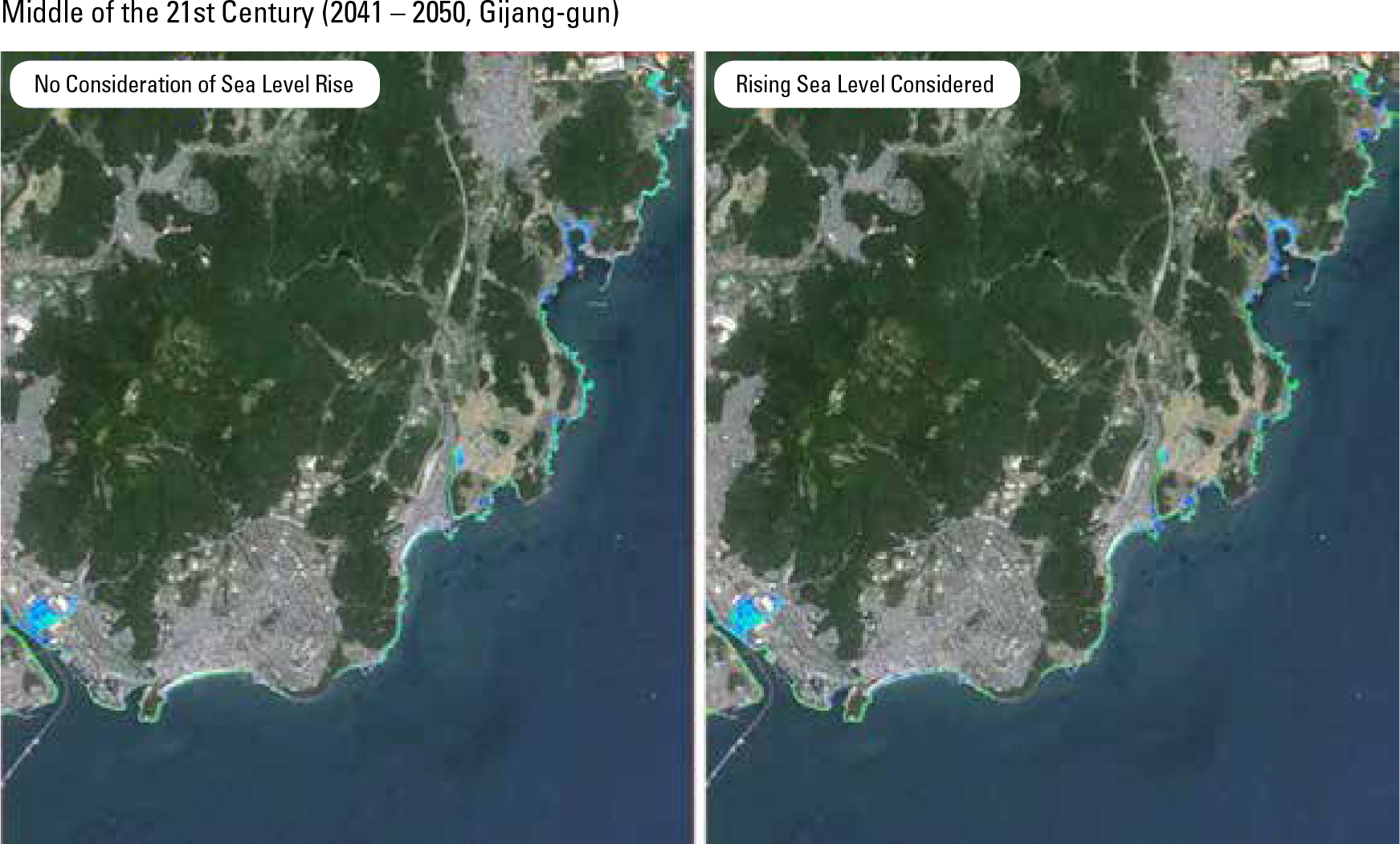English II
Sea level surrounding the Korean Peninsula has increased. The rate of sea level rise in the East Sea is relatively higher than that in the South and Yellow seas, and the rates of sea level rise for the South and Yellow seas are similar. Observed mean sea level fluctuations around the Korean Peninsula are 0.24 cm/yr, 0.21 cm/yr, and 0.27 cm/yr in the Yellow, South, and East seas, respec- tively. Mean sea level uctuation in Jejudo is the highest at 0.47 cm/yr. Boryeong in the Yellow Sea recorded the highest sea level uctuation among all the seas at 0.65 cm/yr. Areas with the highest sea level uctuation recoded are Jejudo (0.55 cm/ yr in the Yellow Sea), Geomundo (0.41 cm/yr in the South Sea), and Pohang-si (0.58 cm/yr in the East Sea), respectively. Compared to the other seas, the sea level rise in the East Sea is remarkable. It is due to an increase in the heat transport of the Kuroshio warm cur- rent and rise in the temperature of warm current through the East Sea as a result of global warm- ing. If global warming is accelerated, the coastal areas are expected to suffer great damage from coastal ooding due to sea level rise. According to the RCP 4.5 (8.5) scenario, the sea level around Korea will rise by 53 cm (65cm) in both the South Sea and Yellow Sea, and 74 cm (99 cm) in the East Sea within the latter part of the twenty- rst century (2071 – 2100). Mean- while, global average sea level is expected to rise by 70.6 cm (88.5 cm) for the same time period. According to the RCP 4.5 (8.5) scenario, the sea level will rapidly increase by 2100, and the sea level around the Korean Peninsula will continue to rise by more than 65 cm (85 cm) in both the South Sea and Yellow Sea, and 90 cm (130 cm) in the East Sea. According to the RCP 8.5 scenario, the high risk of flooding due to rising sea level can be seen in coastal lowlands.
page_2 |






